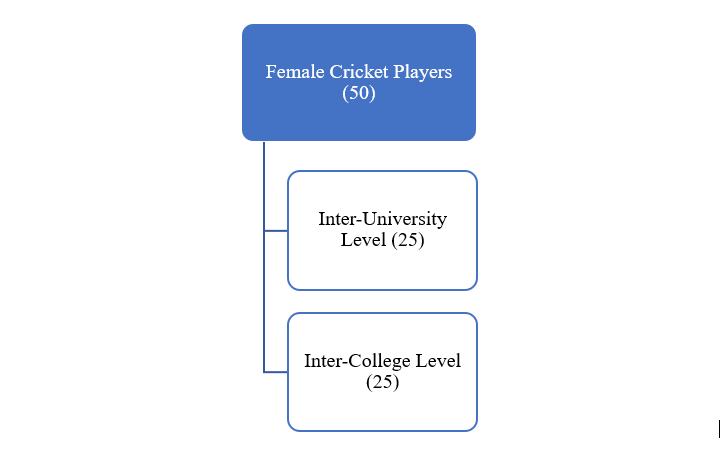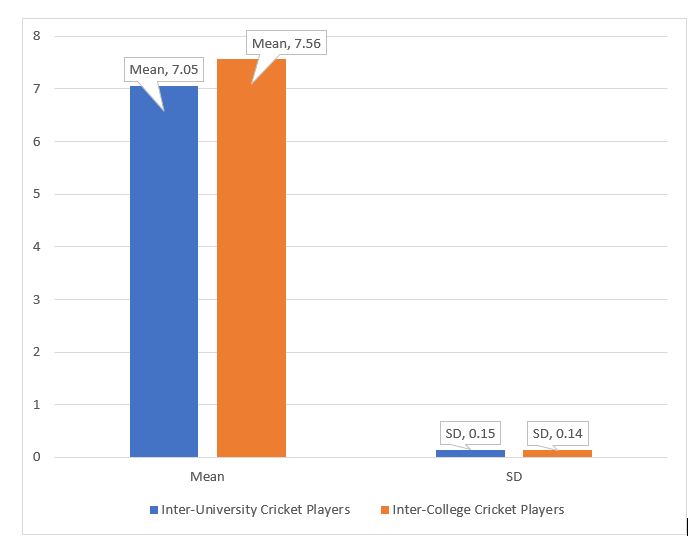Comparative Study Of Selected Psychomotor Variables Between Different Levels Of Female Cricket Players
Sikhwal A1*†
DOI:https://doi.org/10.55968/ijems.v14i02.512
1*† Ashwini Sikhwal, Mped Student, Department of Physical Education, Pacific University, Udaipur, Rajasthan, India.
The purpose of this study was to compare selected psychomotor variables between different levels of female cricket players. Fifty female cricket players(25 inter university level +25 inter college level) were selected for this study. The age of the subjects was ranged between 18 to 25 years. Psychomotor variables:speed andagility were selected for this study. With regard to the purpose of this study,descriptive statistics andindependent t-test was applied to find out mean differences. The level of significance was set at 0.05. The results showed that there were significant differences for psychomotor variables: speed and agility between inter university level and inter college level femalecricket players.
Keywords: Cricket, Psychomotor Variables, Speed, Agility,
| Corresponding Author | How to Cite this Article | To Browse |
|---|---|---|
| , Mped Student, Department of Physical Education, Pacific University, Udaipur, Rajasthan, India. Email: |
Sikhwal A. Comparative Study Of Selected Psychomotor Variables Between Different Levels Of Female Cricket Players. ijems. 2025;14(02):26-31. Available From https://ijems.net/index.php/ijem/article/view/512/ |


 ©
© 

